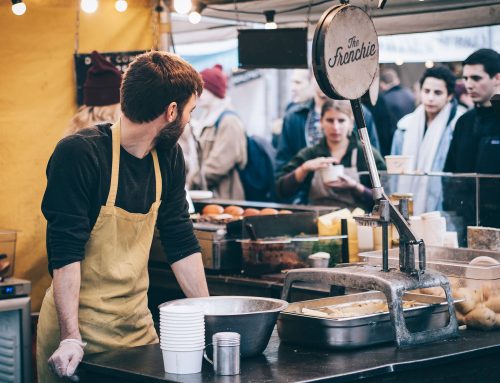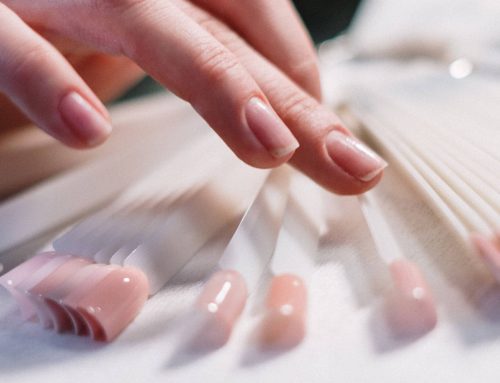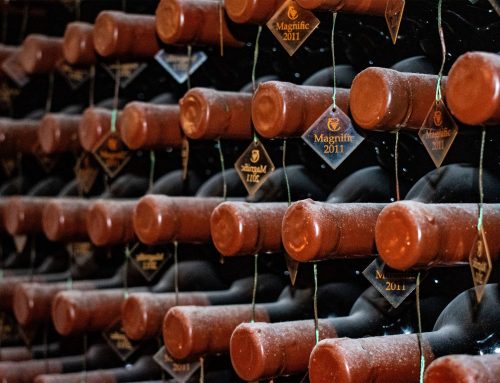We may earn money or products from the companies mentioned in this post at no additional cost to you.
Comparing Espresso: Ristretto vs Long Shot
Ah, the debate between ristretto vs. long shot! It’s one that has inspired passionate conversations among baristas and coffee experts alike for decades. After all, they each have their own unique qualities and can be used to create a variety of beverages with distinct flavors. In this article, I’ll explain the differences between these two espresso shots so you can choose what works best for your favorite beverage.
The first thing to understand when comparing ristrettos and long shots is the difference in volume: a ristretto will typically yield about half an ounce less liquid than a regular shot. Although this might not seem like much, it greatly impacts flavor – due to its stronger concentration, a ristretto tends to produce more intense aromas and tastes. The shorter extraction time also results in lower acidity levels compared to a standard shot, making it ideal for those who are sensitive to acidic notes.
On the other hand, long shots offer greater volumes of liquid with slightly weaker concentrations of espresso grounds. This allows them to bring out sweeter characteristics from some beans while still delivering plenty of body and richness; they’re perfect for creating creamy lattes or cappuccinos, as well as rich macchiatos or mochas. Plus, since there’s more liquid extracted during the process, long shots tend to have higher caffeine content than ristrettos!
So whether you’re looking for bolder flavors or something smoother and creamier, knowing which type of espresso shot suits your taste preferences is key – but luckily, now you know how to make an informed decision between the classic Italian-style ‘ristretto’ versus ‘long shot’.
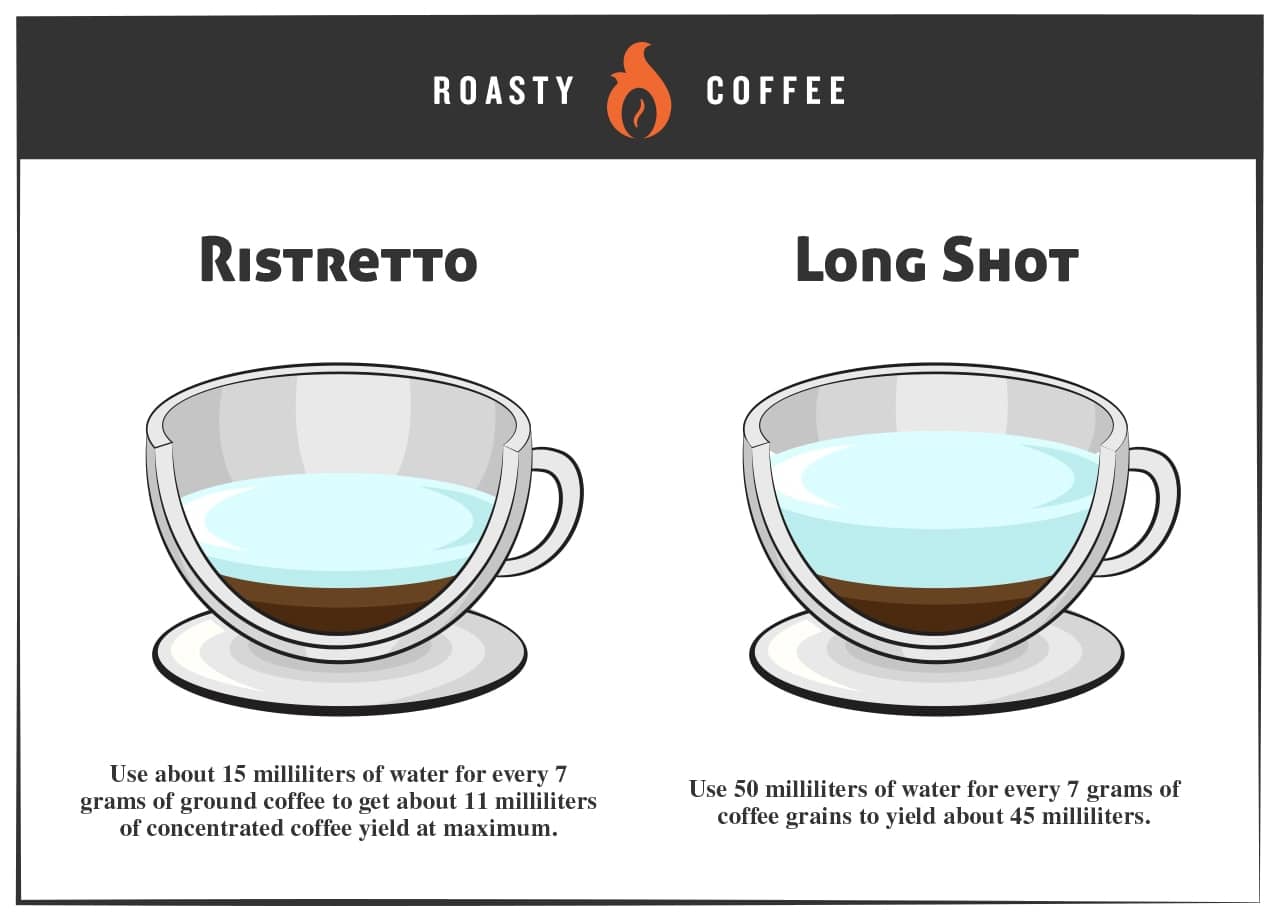
Roasty Coffee
What is Espresso?
Let’s take a look at the classic espresso. It is, in essence, a small cup of highly concentrated coffee brewed under pressure with boiling hot water. A shot of espresso usually contains one ounce or 30 ml of liquid. It can be made from either an automatic machine or a manual portafilter. But what about when we compare two different kinds of espresso? Let’s focus on ristretto vs long shot – which one should you choose for your perfect cup of coffee?
Ristretto means ‘limited’ in Italian, which refers to using less water than normal for making espresso. This results in more intense flavors because more oils are extracted from the grinds without any added bitterness that may occur if too much water is used. Since less water was used during extraction, the resulting drink will be thicker than traditional espresso shots. On the other hand, a long shot uses twice as much water as a ristretto, so it has a milder flavor but still packs enough punch to satisfy even experienced coffee drinkers.
So which one is better – ristretto or long shot? Well, it all depends on personal preference! Some people prefer the boldness of ristrettos, while others enjoy the mellower taste of long shots. Ultimately, each type offers its own unique experience, and there really isn’t a wrong choice between them. So go ahead and experiment until you find your favorite!
What Is A Ristretto?
A Ristretto is an espresso shot that uses half the amount of water. It’s also known as a ‘short shot’ in some parts of the world and is made with an intense flavor profile compared to its counterpart, the long shot. This shorter extraction process results in a concentrated brew with more caffeine than the traditional long shot.
The critical difference between these two shots lies in their extraction methods;. At the same time, both use finely ground coffee beans; it’s the volume of water used that makes them distinctive. A ristretto has less water, which means there’s less dilution of flavors when brewing. This gives rise to a more powerful flavor and aroma – one that stands out from your regular cup of joe.
When done correctly, a ristretto should be smooth but strong on the palate due to its higher concentration of oils and soluble solids extracted from the grinds. As such, many baristas will advise those looking for a stronger taste to opt for this short shot instead.
How Is It Different From An Espresso?
The distinction between a Ristretto and an Espresso is as clear as night and day. To put it succinctly: while they may seem similar on the surface, they are two very different drinks. In this section, we’ll explore what sets them apart from one another.
A Ristretto shot has a much more concentrated flavor than that of an espresso. While both shots use finely ground coffee beans and hot water to extract the flavor in each drink, a Ristretto uses less water than an espresso does, creating a stronger taste with fewer bitter or acidic notes. The result? A robust yet smooth cup of joe – perfect for those who like their coffee strong but not overwhelming!
On the other hand, Long Shot espressos contain twice the amount of liquid used in a Ristretto, making them slightly weaker in terms of intensity and flavor profile. This means they’re great if you want something milder with sweeter undertones or enjoy your espresso with lots of milk or cream added. Not only that, but since there’s more liquid involved in making them, Long Shots also tend to be larger cups compared to Ristrettos, so if size matters when it comes to caffeine intake, then this might suit you better!
In short, whether you prefer boldness over subtlety or vice versa, these two types of coffees have got you covered – no matter which way your palate leans!
What Is A Long Shot?
A long shot is a type of coffee that uses more espresso than regular size shots. Long shots are usually about twice as much espresso as traditional ristretto shots, making them more pungent and often more bitter in taste. When it comes to what makes up a long shot, there’s no exact measurement. Still, generally speaking, they use double the amount of grounds for the same volume of water.
When preparing a long shot, baristas will evenly distribute the ground beans into their portafilter before tamping down firmly with an even pressure to ensure all particles are equally distributed. This creates an optimal flavor when pulling your long shot.
The result is a strong concentrated cup of espresso with a rich texture and bold flavor notes, which can be enjoyed either by itself or used as part of specialty drinks such as lattes, cappuccinos, and macchiatos. It’s important to remember that because you’re using double the amount of grounds compared to a standard ristretto shot, you should use two times less milk or other liquids if adding any at all. Enjoying this type of espresso provides not only intense flavors but also gives you an extra kick!
Caffeine Content Of Both Drinks
When it comes to the caffeine content of long shots and ristrettos, there is a significant difference between them. The average long shot contains around 75-85mg of caffeine, while the ristretto only has 50-60mg. This makes sense as well; since a long shot uses more coffee grounds than a ristretto does, it stands that the final product would contain higher levels of caffeine.
For those looking for an extra jolt in their morning cup of joe, the best option is clearly the long shot. On top of having more caffeine overall, its prolonged extraction process also leads to increased potency in terms of taste and aroma – making it ideal for anyone who prefers bolder flavors or greater intensity in their beverages.
Conversely, if you’re seeking something milder without all the robustness associated with traditional espresso drinks like lattes and cappuccinos, then opt for a ristretto instead. Its shorter extraction period produces less acidity and bitterness typically found when brewing stronger espressos; hence why, many people take kindly to its gentler flavor profile compared to longer shots. As such, this type of beverage can make for great early afternoon pick-me-ups or post-dinner indulgences too!
All things considered, both options offer distinct advantages depending on personal preferences and needs: so next time you find yourself at your local cafe counter debating which one to get – just remember these key points about their respective caffeine contents!
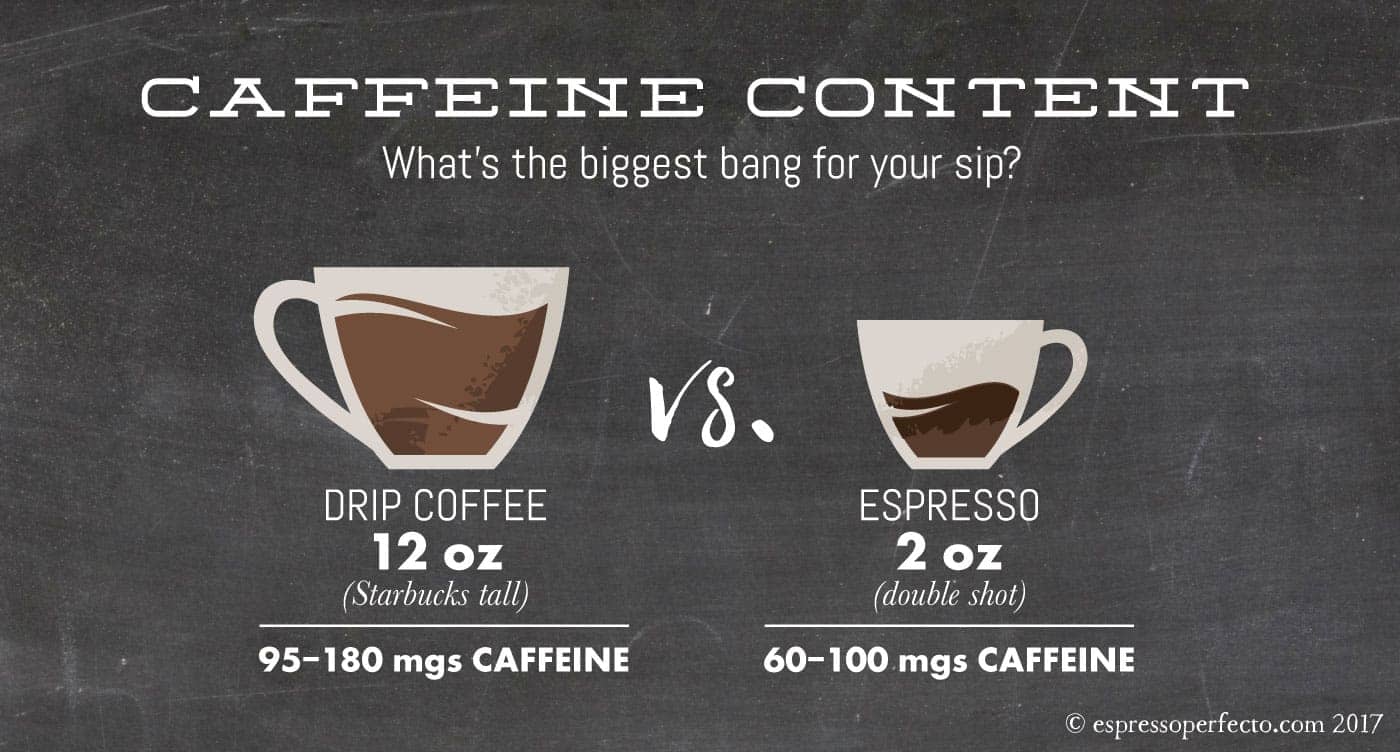
EspressoPerfecto
Popularity Among Coffee Lovers
The popularity of ristretto vs. long shot among coffee lovers has become a topic of debate in recent years. Ristrettos have been gaining more and more notoriety as they offer a bolder flavor than the traditional espresso-based drinks that many people are familiar with. On the other hand, long shots provide a milder cup of coffee which is preferred by some who want less intense an experience.
So what do coffee aficionados think? Well, it really depends on personal preference. Many fans of more robust flavors opt for the concentrated intensity of ristrettos, while others prefer the smoother taste of longer shots. It’s also important to consider how you like your milk or cream added – if you’re adding milk to either drink, then a ristretto will give you a thicker texture, whereas a long shot will be thinner and slightly sweeter due to its higher proportion of water content.
Making The Perfect Cup At Home
Making either one at home isn’t difficult if done correctly: use freshly ground beans suited for espresso machines (not regular drip grinders), tamp firmly into portafilter baskets before brewing, dose according to taste preferences (about 18 grams per double shot) and adjust brew time accordingly. Follow these steps carefully while keeping track of temperature throughout the process – heating elements vary between models – then let your senses lead you towards deliciousness!
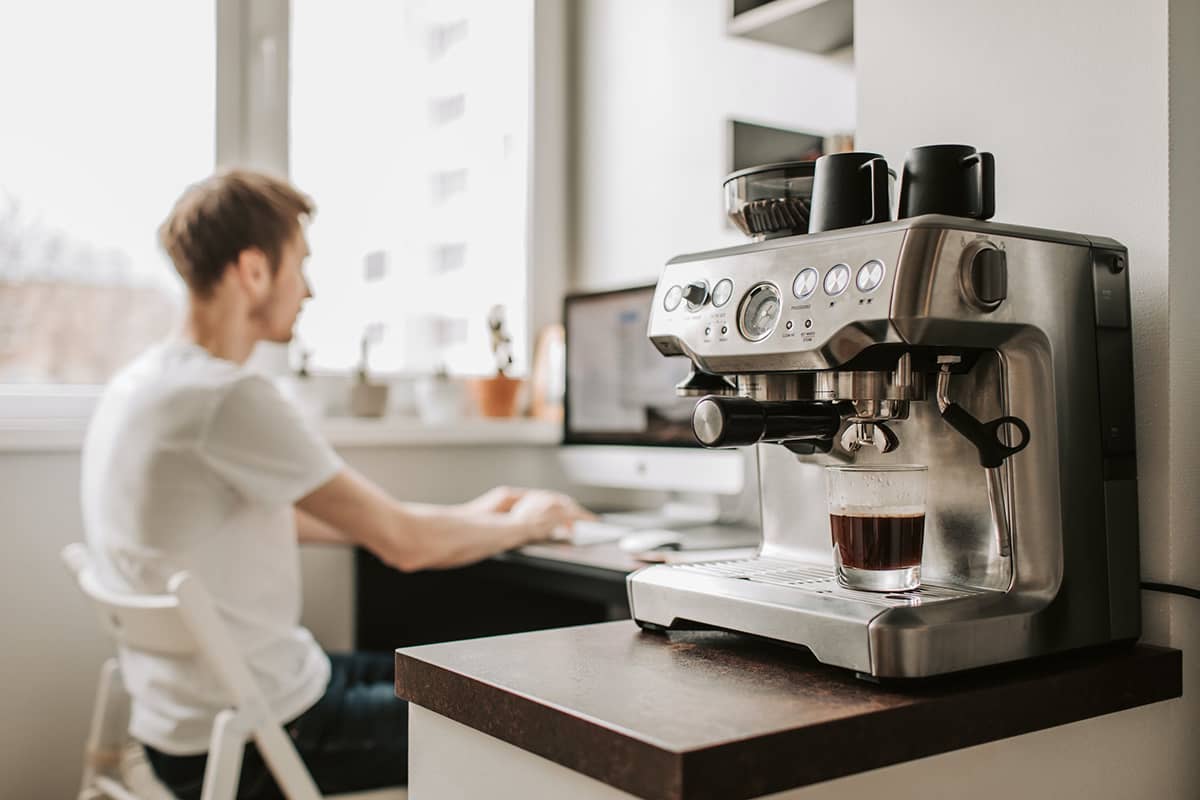
Conclusion
I can confidently say that espresso drinks are an art form. From the ristretto to the long shot, each drink offers something special that should be celebrated and savored.
A ristretto is rich and bold, delivering all the flavors without bitterness. In contrast, a long shot has more body and complexity but still maintains a delightful sweetness. Each type of espresso provides its own unique experience for those who appreciate it.
In my opinion, there’s no one right way to enjoy your espresso. Whether you prefer a short or long pull, when done correctly, both have the potential to make even the most discerning coffee lover swoon with delight! The only thing left for you to do is find out which one brings out your best cup yet – so grab your favorite beans and get brewing!

